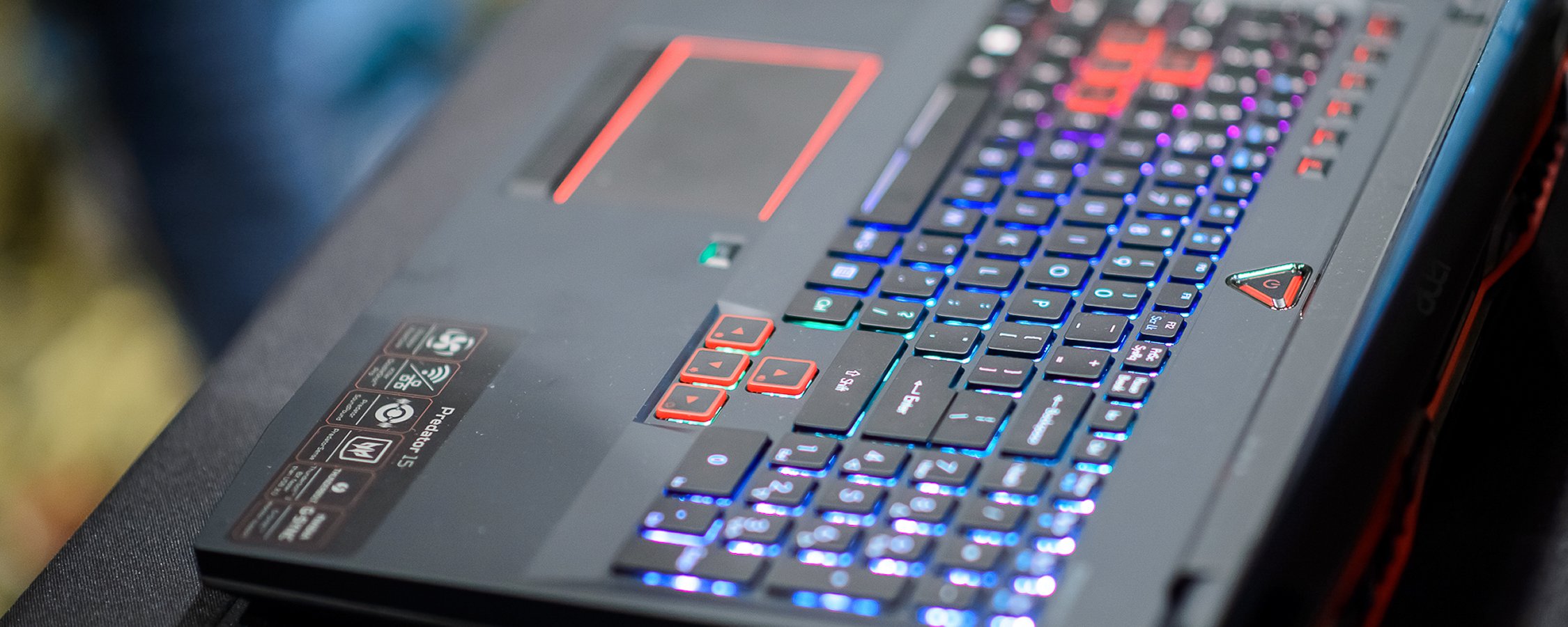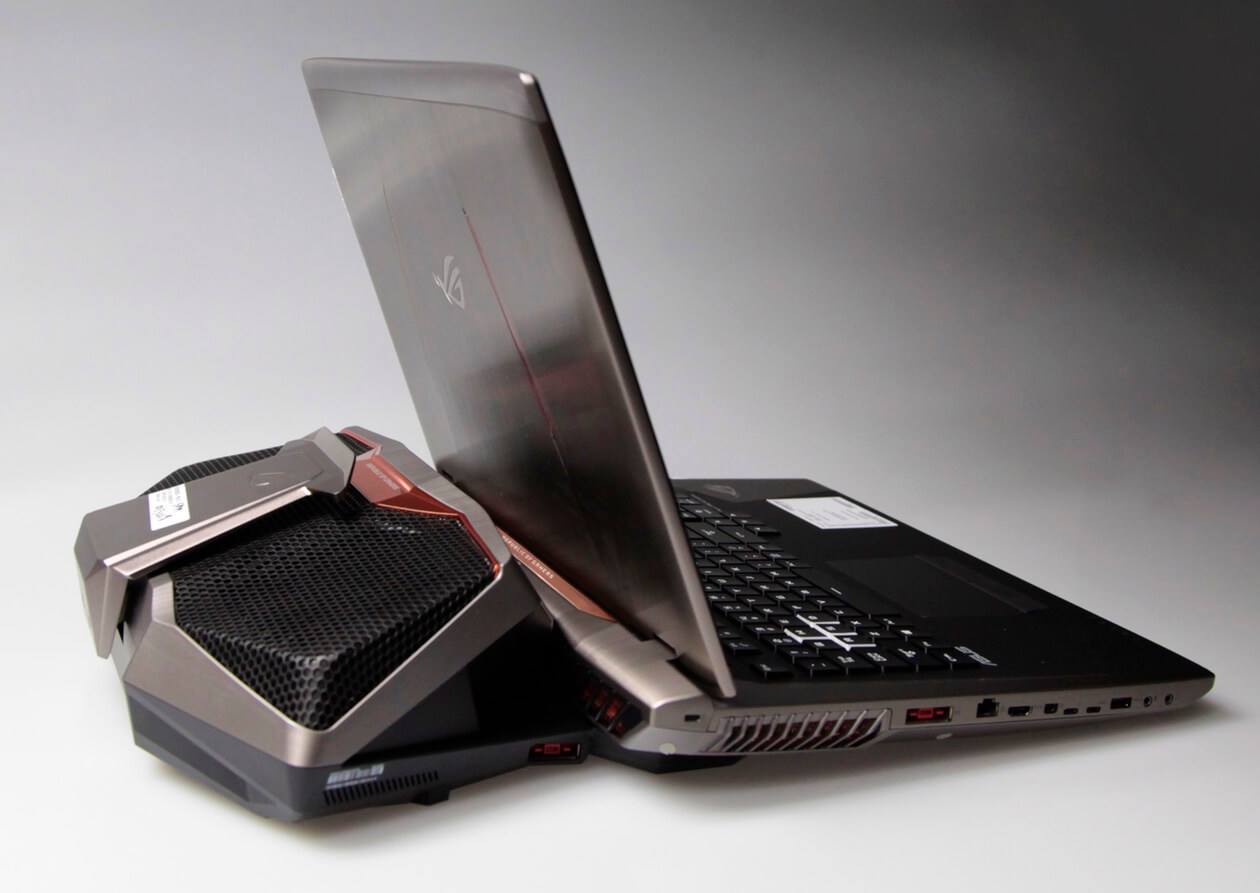Last week we were in Bangkok to attend Nvidia's special media event. The product to be unveiled was unknown so I was intrigued to say the least. Having just announced the Pascal Titan X we suspected a GTX 1080 Ti card might follow. So was it a brand new high-end gaming GPU? A boring but uber-capable server GPU? Mobile, mobile was overdue.
We were pleased to find some familiar faces.
On display were the GeForce GTX 1080, 1070 and 1060. The very same GeForce 10 Series GPUs released in the past three months, with a twist. These revisions were designed for mobile gaming, a.k.a. gaming laptops.

Typically I don't cover mobile gaming gear and instead stick to the desktop stuff, but this time around they are one and the same, for the most part.
When Nvidia launched GTX 900 GPUs almost two years ago they made a significant step forward in terms of power efficiency. The true benefits of this improvement were realized once Maxwell made its way into laptops. The GeForce GTX 980M was a very capable GPU for laptop gaming, more than anything else we had seen before even though it was a tad slower than a GTX 970 desktop card.
The GTX 980M was also made practical thanks to its 100w TDP rating. In an effort to provide gamers on the go with even more horse power Nvidia delivered a fully equipped GTX 980 with an 8GB memory buffer. The results were as expected, high-end desktop-like gaming performance in a laptop.
Evidently with new Pascal-based GeForce 10 GPUs on the desktop, the once mighty GTX 980 has been demoted to a mid-field player. Today, the $250 GTX 1060 offers the same performance as the GTX 980 while consuming considerably less power.
Which had us wondering what Nvidia would put together for their mobile Pascal lineup. Given that the GTX 980 is a 165w part and Nvidia managed to get it inside laptops with a small reduction in clock speed. After all, with all its efficiency enhancements, the GTX 1080 is still a 180w part on the desktop.
Let Us Re-introduce You to Pascal
So there we were, 70 odd members of the APAC media sitting in a large conference room at the Swissotel Le Concorde in Bangkok, wondering just what the mobile version of GeForce 10 Series looked like.
What Nvidia has done is simpler than expected: take the existing GPUs and stick them inside laptops, so no 1080M then. Instead, top gaming laptops will be equipped with a fully-fledged GTX 1080 GPU with all 2560 CUDA cores operating at a base clock speed of 1556MHz with a boost clock speed of 1733MHz.
That should make the GTX 1080 on a laptop virtually no slower when compared to say, a Founders Edition desktop graphics card. However Nvidia does anticipate the mobile GPU will be ~10% down on performance, presumably from a lower power target and less potential to throttle given thermal conditions. Still the GPU core configuration as well as the memory subsystem is essentially the same and Nvidia was quick to point out that under the right conditions it is possible to see desktop-like performance. Those conditions being the aforementioned power and thermal targets.
The mobile revision of the GeForce GTX 1070 does differ more than its desktop counterpart but should be equally capable. On the desktop the GTX 1070 features 15 SMM units for a total CUDA core count of 1920. On mobile it will feature an additional SMM unit, so just 4 are disabled in the GP104 silicon. This enables 2048 CUDA cores, 7% more than the desktop model. These cores are clocked at 1442MHz with a boost clock speed of 1645MHz resulting in 5.91 GFLOPS of compute power.
This is slightly more processing power than the desktop GTX 1070, but due to the nature of GPU Boost 3.0 there is a good chance a desktop card will still operate at higher frequencies thanks to greater thermal and power headroom.
Finally we have the GTX 1060 which should be faster than the GTX 980M. The same 1280 CUDA cores seen on the desktop model are present and the memory subsystem also remains the same. The cores operate at 1404MHz with a boost frequency of 1670MHz.
Given the GTX 1060 is rated at just 120 watts on the desktop, we believe this is going to make for the ultimate 1080p mobile option. Gaming laptops using the GTX 1060 will not only be compact and lightweight, but they should also come at a reasonable price. Additionally, they should be practical, something gaming laptops typically aren't. For these reasons we foresee the GTX 1060 to be a massive success for Nvidia and svelte gaming laptops in general moving forward.
Nvidia has also refined its BatteryBoost technology to go along Pascal's debut on mobile devices. BatteryBoost aims to improve battery life while not compromising frame smoothness, it's new ability to control frame rate variance directly at flip time nearly eliminates stutter previously caused by CPU interruptions according to Nvidia. This reduces both frame-to-frame noise, as well as CPU-induced hitching in games.
From what we were able to gather this new feature, which is supported at the driver level, will also be offered to existing Maxwell users. So that is very cool.
Hands-On Time
Nvidia had over a dozen GeForce 10 Series laptops on display and we were free to play around with them for a few hours. Most of the media seemed heavily focused on what kind of 3DMark Fire Strike scores these laptops could produce. I was less interested in Futuremarks synthetic scores and instead fired up MSI Afterburner to monitor the GPU frequency and operating temperature.
With throttling being such a 'hot' issue for the Founders Edition graphics cards on the desktop, I was curious to see how GPU Boost 3.0 worked with these mobile versions.
Therefore, I jumped on the first available GTX 1080 powered notebook, downloaded and installed Afterburner and got the on-screen display info up. Having hogged the laptop for a good 20 minutes it became clear that the same 80 - 83-degree thermal threshold applied to these mobile GPUs.
At this temperature the GTX 1080 maintained an operating frequency in excess of 1.7GHz, which is great news given the advertised 1645MHz boost clock speed. Performance-wise the MSI laptop I was playing Mirror's Edge Catalyst on was extremely impressive.
I also tried a similar MSI laptop fitted with the GTX 1070 and again a similar operating temperature and frequency was found after a decent amount of gameplay.
Nvidia had a few Ansel demos on GTX 1060-powered laptops using The Witcher 3: Wild Hunt at 1080p. I wasn't able to get any thermal or frequency numbers for those, but the game was extremely smooth and looked amazing with the visuals maxed out.
For those wondering, I did take a peek at the power bricks used to power these laptops and it seemed that all the GTX 1070 and GTX 1080 systems were using rather chunky 230w units. That's not bad given Core i7 quad-core processors were being used along with all the other high-end hardware you would expect.
There were a number of VR demos as well, running on laptops featuring not just the GTX 1080 and 1070, but also the GTX 1060.
Shut Up and Take My Money
Nvidia's mobile GPU lineup looks very impressive and promising. It will now be up to manufacturers to come up with a wide variety of gaming laptops that satisfy users' demands that go from the powerful and bulky laptops that can act as a fully fledged gaming stations to the more svelte and potentially ultra portable laptops that now packing a GTX 1060 or GTX 1070 can offer serious uncompromised gaming.
Historically I've not been a big fan of gaming laptops, most notably because of the underwhelming performance/value compared to a more affordable desktop, but also because they rarely prove to be portable and convenient to carry around as your main system. While GTX 1080 and 1070-enabled laptops will likely still suffer from many of these problems, they will at least rival their desktop counterparts in terms of performance output. That is obviously a big deal for a device that has been purchased almost exclusively for gaming on the go.
According to Nvidia gaming laptops are currently the fastest growing gaming platform. Once just a niche within PC gaming, they have become a major gaming platform in their own right. Today's gaming notebooks are equipped with the latest technologies, have the performance to drive top notch visuals beyond 1080p, and are of course built on the PC's open ecosystem.
From what I saw in Bangkok, the GTX 1060 gaming laptops will be the most interesting due to portability while remaining capable of high-end gaming, but that's just personal preference.
Conversely, the first GeForce GTX 10 laptop to land in TechSpot's labs isn't a price conscious GTX 1060 notebook. It isn't even a high-end GTX 1080 model. Instead Asus sent us a prototype of the beyond-extreme ROG GX800 featuring two GTX 1080s running in SLI! This gaming workhorse is also liquid cooled, features a massive 18.4" screen, RGB keyboard, and a powerful Core i7 processor.
For now I hope you have enjoyed reading about our hands on experience with the GeForce GTX 10 laptops. We'll follow up shortly with benchmark results and more hard data.














